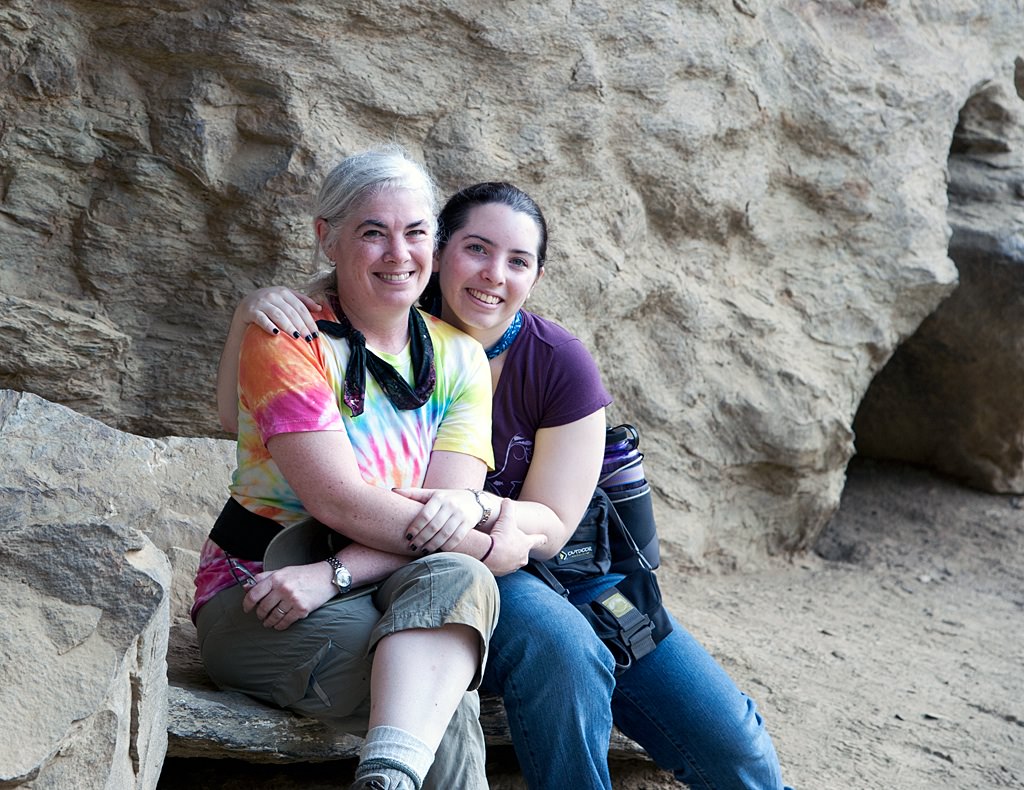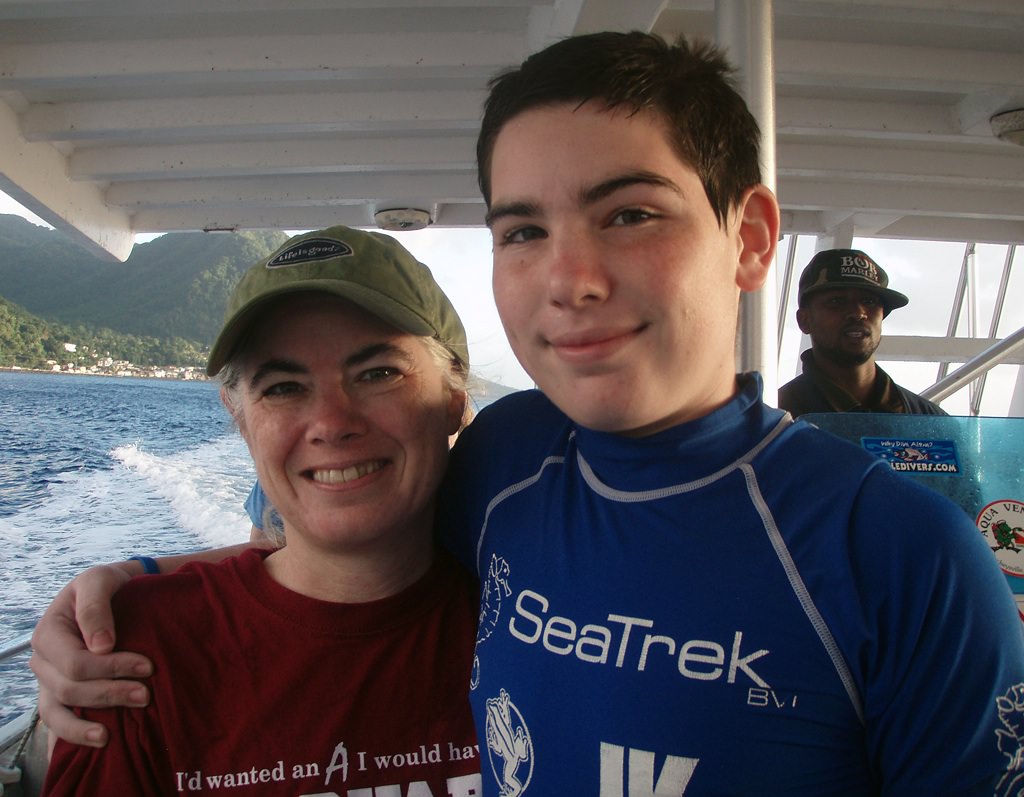How many biophysicists do you know who are also practicing clinicians and enjoy riding a Harley-Davidson? Those acquainted with Jil C. Tardiff, Professor of Medicine and of Cellular and Molecular Medicine at the University of Arizona, do. Tardiff, a medical researcher and practicing cardiologist, divides her time between the lab and the clinic, using her experience and passion for each to bring essential insight to the other.
Though interested in biology and natural science, Tardiff didn’t plan to pursue a career in the sciences. She started her undergraduate studies at the University of California at Berkeley intending to major in English and pre-med studies. A single lecture on the relative resistance to malaria conferred by the HbS allele in a physical anthropology class, however, piqued her interest in a new subject: genetics. “The interplay between abnormal protein structure of the hemoglobin caused by a single amino acid substitution and a complex human disorder just fascinated me,” she recalls. She earned a bachelor’s degree in genetics and went on to complete both medical and graduate school at the Albert Einstein College of Medicine. During her cardiology fellowship at Columbia-Presbyterian Medical Center, she encountered a patient with hypertrophic cardiomyopathy (HCM), and she became fervently interested in the case—and in the cardiac thin filament. A couple of weeks visiting R. John Solaro’s lab in the Department of Physiology and Biophysics at the University of Illinois at Chicago School of Medicine clinched it. “Besides getting to interact with John’s group, he spent one or two hours a day teaching me about the thin filament, Ca2+ sensitivity and sensitizers, and length-dependent activation,” Tardiff says. “Talk about an exciting and inspiring time.”
I have always been fascinated by the question of how single amino acid substitutions in a protein component of the thin filament can cause such a potentially devastating cardiac disease.
-Tardiff
Tardiff’s current research focuses on the basic molecular mechanisms that underlie the pathogenesis of cardiomyopathies caused by mutations in the cardiac thin filament, specifically HCM. Using various lines of mouse models her lab developed for the purpose, she studies them to help characterize pathways and mechanisms involved in pathogenic remodeling at both the cellular and whole-heart levels. “We usually start with a mouse model to establish whether we are able to phenocopy the human disease with respect to ventricular remodeling,” she says, “and then start to break down the mechanism with respect to the timing and magnitude of the myocellular response to the change in myofilament activation induced by the mutation.” Because of her dual occupation as researcher and clinician, Tardiff’s colleagues benefit from her clinical perspective. “She has taught me to temper the interpretation of mouse data and to consider the impact of our findings on the patients,” Solaro says. Indeed, Tardiff keeps this rule foremost in mind.  “It is always challenging to develop robust linkages between our different experimental approaches and then make that large leap to thinking about the human disease,” she says. “As a cardiologist I am keenly aware of the complexity of human cardiomyopathies and thus I am very focused on not over-extrapolating experimental findings to the bedside.” This fastidious approach has earned Tardiff accolades from her colleagues. “Jil is a solid, careful scientist,” says Michael Regnier, Professor and Vice Chair in the Department of Bioengineering at the University of Washington, who served with Tardiff on a grant review committee for the Cardiac Contractility and Heart Failure study section for the National Institutes of Health. “She does not over-interpret results and you can trust her work to be high quality.” Elizabeth McNally, Tardiff’s fellow graduate student and current Professor of Medicine and Human Genetics and Director of both the Institute for Cardiovascular Research and the Cardiovascular Genetics Clinic at the University of Chicago Medicine, recognizes that Tardiff’s career choice is unique, and she excels at it. “She is a terrific clinician,” says McNally. “The path of least resistance these days is to give up clinical work since there are so many regulatory burdens surrounding medicine. Jil has persevered and continues to bring her skills to cardiology.” Regnier agrees. “She has been a great advocate for directing biophysical research towards clinically relevant questions and important aspects of heart disease,” he says.
“It is always challenging to develop robust linkages between our different experimental approaches and then make that large leap to thinking about the human disease,” she says. “As a cardiologist I am keenly aware of the complexity of human cardiomyopathies and thus I am very focused on not over-extrapolating experimental findings to the bedside.” This fastidious approach has earned Tardiff accolades from her colleagues. “Jil is a solid, careful scientist,” says Michael Regnier, Professor and Vice Chair in the Department of Bioengineering at the University of Washington, who served with Tardiff on a grant review committee for the Cardiac Contractility and Heart Failure study section for the National Institutes of Health. “She does not over-interpret results and you can trust her work to be high quality.” Elizabeth McNally, Tardiff’s fellow graduate student and current Professor of Medicine and Human Genetics and Director of both the Institute for Cardiovascular Research and the Cardiovascular Genetics Clinic at the University of Chicago Medicine, recognizes that Tardiff’s career choice is unique, and she excels at it. “She is a terrific clinician,” says McNally. “The path of least resistance these days is to give up clinical work since there are so many regulatory burdens surrounding medicine. Jil has persevered and continues to bring her skills to cardiology.” Regnier agrees. “She has been a great advocate for directing biophysical research towards clinically relevant questions and important aspects of heart disease,” he says.
Tardiff is now re-establishing her lab at the University of Arizona after a recent move. Setting up her lab after the relocation has been challenging, but nothing her boundless energy can’t tackle. One thing Tardiff isn’t good at is sitting still. “Jil has a phenomenal amount of energy,” says colleague Margaret Westfall, Associate Professor of Surgery and Physiology at the University of Michigan Health Systems. “She combines this energy with her passion to understand the disease process responsible for inherited mutations linked to cardiomyopthies, and does a spectacular job teaching those of us in the basic sciences about the clinical face of this disease.” She also expends that energy on photography, target practice, hiking with her daughter and following various sports teams including her son’s baseball team. Whether scientific or not, Tardiff is up for new experiences. “She has no inhibitions about taking on new demanding technical and theoretical approaches to the major questions,” says Solaro. With the move to Arizona comes a wider scope of technological opportunities, opening new avenues of research to Tardiff’s lab. “We can start to incorporate state-of-the-art microscopy and cell biology to study the potential role of changes in myofilament assembly and developmental expression of mutant cTnT molecules in the pathogenesis of disease,” Tardiff says. “The latter is exciting given the new information regarding the prominence of sarcomeric gene mutations in childhood cardiomyopathies.”
Whether she’s perfecting her own tried-and-true methods or venturing into new territory, Tardiff always finds a willing sounding board at the Biophysical Society Annual Meeting, which provides “a very unique and supportive atmosphere,” she says. “Basically everyone in my field goes, and the poster sessions in particular are fantastic. What’s great is that all of my senior colleagues participate very actively in the posters and my students and I always learn a ton.” Making sure that her students have ample opportunity to succeed is a priority. “Jil is a wonderful mentor,” says Westfall. “She pushes students to do their best and is their greatest cheerleader when they are presenting posters or a talk at meetings.” Seeing her students take ownership of their research and careers is rewarding for Tardiff. “I really enjoy watching my graduate students ‘grow into’ their projects,” she says. “More recently my MD-PhDs have started choosing residency programs and career paths, and that is very exciting for me.” She certainly took the advice she now passes on when she chose her career: love your subject. “Figure out what fascinates you when you come from the clinical side like I did,” Tardiff says. “Thinking about how thin filament protein mutations cause cardiomyopathies, at least to me, is never boring.” She also shares some wise advice Solaro shared with her. “It is crucial to carve out a niche early,” she says. “Try to get your name indelibly linked to a question or approach and build from there.” Tardiff herself chose aptly. “I truly enjoy all aspects of this field,” she says. “I can’t imagine doing anything else.”